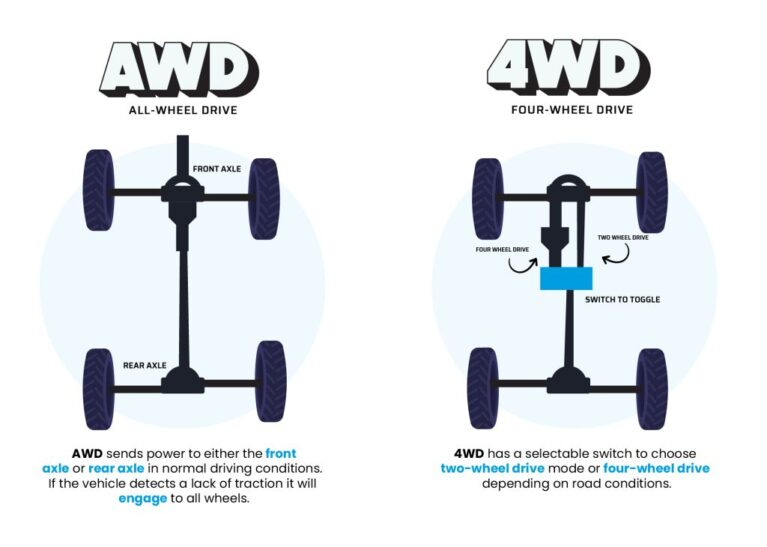When you’re shopping for an SUV or crossover in Missouri, one of the most important decisions you’ll make is choosing between All-Wheel Drive (AWD) and Four-Wheel Drive (4×4 or 4WD). While both systems provide power to all four wheels, the differences can have a big impact on your daily driving experience.
For most drivers, AWD is the smarter, safer, and more convenient choice. Here’s why.
What Is All-Wheel Drive (AWD)?
All-Wheel Drive: is a drivetrain system that automatically sends power to all four wheels, optimizing traction based on road conditions. Unlike 4×4, which typically requires manual activation, AWD works in the background—constantly adjusting as needed.
Benefits of All-Wheel Drive:
- Automatic traction control for wet, snowy, or icy roads
- No need to manually switch drive modes
- Better fuel economy than traditional 4×4 systems
- Ideal for daily commutes, family road trips, and light off-road driving
A couple small trade-offs:
- Typically slightly less fuel-efficient than front-wheel drive
- Higher upfront cost compared to FWD versions
Still, for most drivers, AWD offers the best balance of performance, safety, and ease of use—especially in unpredictable weather.
What Is 4×4 (Four-Wheel Drive)?
Four-Wheel Drive is a traditional drivetrain typically found in trucks and heavy-duty SUVs. It’s designed for serious off-roading, deep snow, and rough terrain. 4WD systems often include low-range gearing for extreme traction needs.
Pros of 4×4:
- Excellent for off-roading, towing, and deep snow
- Stronger components built for rugged conditions
Cons of 4×4:
- Less fuel-efficient than AWD or FWD
- Requires manual activation, which can be forgotten or misused
Unless you’re regularly driving in rough, off-road terrain or hauling heavy loads, a 4×4 system might be more than you need.



